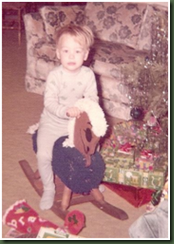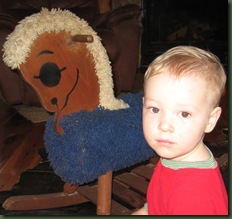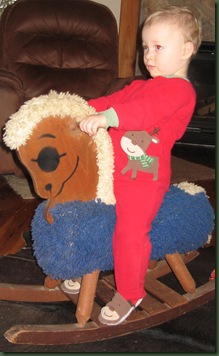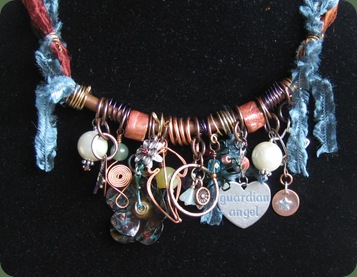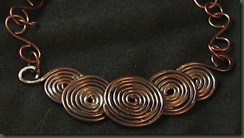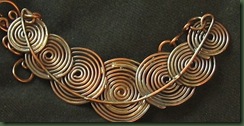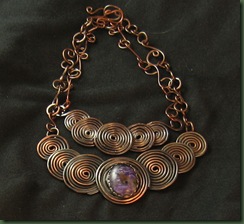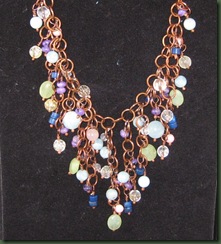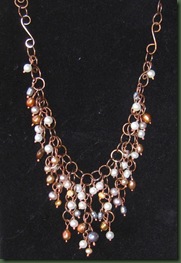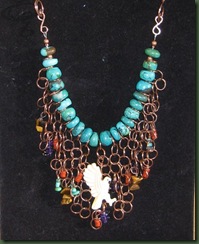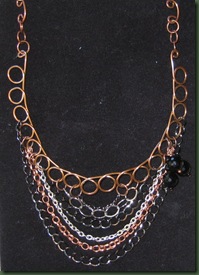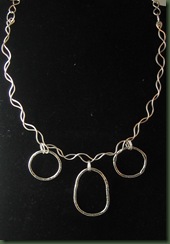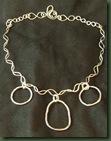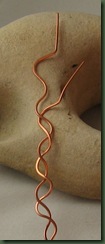The title of this post easily rolls off my tongue and down to my fingers as I type. It is not new to me or other educators and has been predominant at the forefront of teaching since before the push for cooperative learning in the late 1980’s and 1990’s. Personally, I’m very much a loner and hadn’t thought much about the need for collaborative learning until yesterday when a news feature about Hole-in-the-Wall Education Ltd. brought it to mind. Information from the website for this group http://www.hole-in-the-wall.com/index.html follows:
“Hole-in-the-Wall Education Ltd. (HiWEL) is a joint venture between NIIT Ltd. and the International Finance Corporation (a part of The World Bank Group). Established in 2001, HiWEL was set up to research and propagate the idea of Hole-in-the-Wall, a path-breaking learning methodology created by Dr. Sugata Mitra, Chief Scientist of NIIT. . . . [it} was first tested in a slum in Kalkaji, New Delhi, in 1999. The experiment was replicated in two other rural sites in the same year. The first adopter of the idea was the Government of NCT of Delhi. In 2000, the Government of Delhi set up 30 Learning Stations in a resettlement colony. . . . “
At first I scoffed and said to myself, “this is nothing new.” Yet, I still listened. Finally, I gleaned from the news story that Hole-In-the-Wall revolves around the idea of four or five students gathered around one computer trying to learn something or answer a specified question. This minimalist approach to computer learning gets much of its punch from the fact that there is only one computer. The students must communicate and share ideas rather than working independently. This certainly isn’t a new idea, but many of our learning arenas have gotten to the point where it seems each and every student sits at his or her own computer terminal and communication, if it exists regarding the learning, flows through cyberspace.
Incubating about the above information, I wondered why I’m not applying it to my current fascination with design work. Where is my think tank? Where is my hole in the wall setting? Consider the value of designers from various facets of work coming together to answer a question, solve a problem and/or brainstorm new uses for materials. We often do these things independently, but do we spent enough time engaged in collaborative learning? I, for one, do not.
I do see collaboration through various chat groups, but find this usually amounts to a question followed by responses from others about what they have used in a given situation. This is not collaborative learning. This is one person telling another what has previously worked. In a think tank, ideas come together to create something new to everyone. From intensive creativity training, I know that an ultimate idea can be garnered from simply watching the body language, eye movement or vocal inflection of another person, something we can’t get from computer chat. Often, we don’t even connect the thought with that person, yet it comes to us just the same.
Many designers are expertly engaged in social networking via the computer. It is an essential part of our business. What might happen if we stole two or three hours from this once or twice a month for collaborative design work wherein we were not trying to learn or make something, but simply trying to develop new ideas or techniques? This collaboration would be process based rather than outcome based. It would be a designers think tank. It could be an acrylic artist, a sculptor, a wire worker and a metalsmith. It might be a seed beader, a polymer clay artist, a fiber artist and a scrapbooker. It could be any combination of people interested in collaborative learning.
At a minimum, a designer think tank would provide a thinking challenge and brain stimulation. Perhaps a few dendrites would strain to branch and some of us would be removed from our comfort zones. I know that to stretch and grow in my work, I much be a bit uncomfortable and experience a little mental pain. I need to get into a situation where I don’t readily know the answer. Perhaps some hole-in-the-wall design collaboration might just do the trick. What do you think?
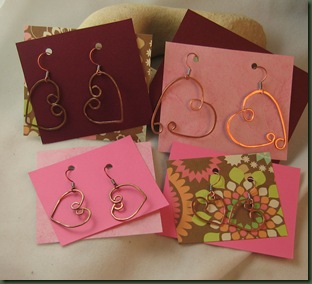 First they were quite plain, although I tried to give them slightly different shapes.
First they were quite plain, although I tried to give them slightly different shapes. Next, I fancied a few pair by adding beads. Pearls, garnet chips and something red helped these get dressed up.
Next, I fancied a few pair by adding beads. Pearls, garnet chips and something red helped these get dressed up. Finally, last night I got a bit carried away with the alcohol inks. (No! I wasn’t drinking them.) They adhere nicely to the copper and polka dots seemed to add a little twist here. I also did a pair with double hearts soldered to each other, but that photo refused to work. Now I’m thinking of all the shapes that could handle these polka dots in various colors. Let’s see there are butterflies and balls and . . .
Finally, last night I got a bit carried away with the alcohol inks. (No! I wasn’t drinking them.) They adhere nicely to the copper and polka dots seemed to add a little twist here. I also did a pair with double hearts soldered to each other, but that photo refused to work. Now I’m thinking of all the shapes that could handle these polka dots in various colors. Let’s see there are butterflies and balls and . . .


